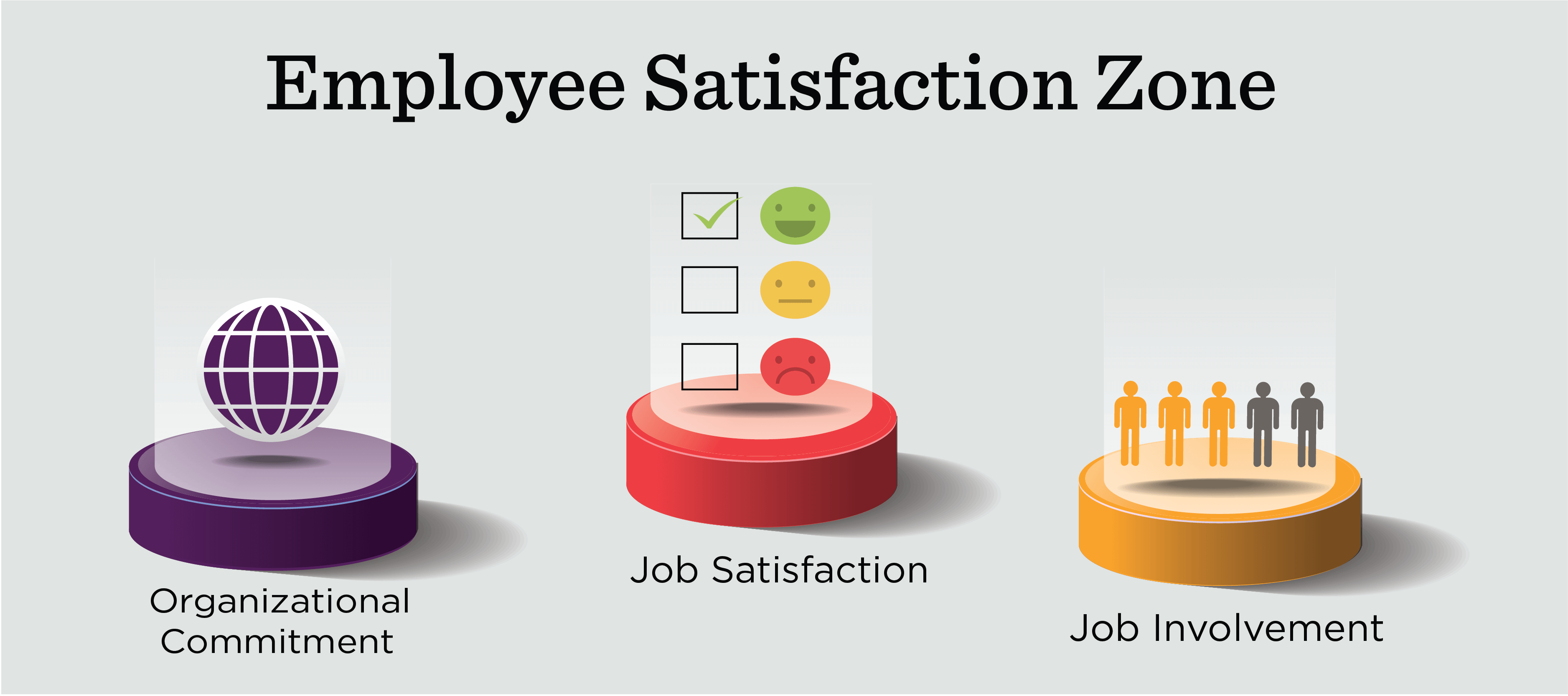Often engaged employees are also happy employees. And many managers equate satisfied employees as happy employees. As a result, many managers tend to use “engaged” and “satisfied” employee terms interchangeably. But there are clear differences.
Let’s take a look at some of the key differences between a satisfied employee and an engaged employee.
Engaged versus Satisfied Employees in Job Performance
Engaged employees improve business processes and add value to their positions. They often think outside the box to create improvements. But, employee satisfaction is not the same thing as engagement.
Employees can be very satisfied with their organization, management, and their compensation, but have little engagement. They accept the status quo. Satisfied employees don’t always have high job performance.
Employee engagement, on the other hand, is the extent to which employees feel passionate about their jobs, are committed to the organization, and put discretionary effort into their work.
Engaged employees provide leadership, passion, and do more than the bare minimum. They love challenges and problem solving. They are the engine of a company.
Conversely, satisfied, but unengaged employees tend to do the minimum required to keep their jobs and keep things the same. They have to be compelled more and are less likely to identify and solve key factors that can improve organizational performance.
The problems with Employee Satisfaction Surveys
Many employers have opted to use Employee Satisfaction Surveys to quantify employee engagement. When departments score high in employee satisfaction, many managers feel that they have solved all their employee engagement challenges.
But, while surveys can help to localize problems within larger organizations, they do little to identify engaged employees.
The key is to not only identify satisfied employees, which is useful for attrition prevention, but to accurately identify engaged employees.
But, why is there a dissonance between employee satisfaction surveys and engaged employees?
The standard Employee Satisfaction surveys usually touch upon one or more of three basic attitudes.
- Organizational Commitment
- Job Satisfaction
- Job Involvement

Organizational Commitment / Loyalty
Organizational commitment includes employer loyalty. It measures how much an employee feels like they fit into the organization.
Most of the research on it has focused on the emotional attachment to the organization. But, while organizational commitment has a positive impact on employee satisfaction, it doesn’t predict productivity.
Job Involvement
Job involvement is a measure of the degree to which employees identify with the job they have. Those with a high level of job involvement care about the kind of work they do.
Research and studies seem to indicate that those with a high degree of job involvement tend to show a positive correlation to job performance. This is most seen in reduced absenteeism and attrition.
Job Satisfaction
Because engaged employees are almost always satisfied employees, many employers mistakenly assume that all satisfied employees are also engaged. When people are surveyed to measure their job satisfaction they are responding with their feelings about the job based on their evaluation of its characteristics.
But, an employee’s perception of her satisfaction with the job, is a complex equation involving assessments of several individual discrete elements like the nature of work, empowerment, supervision, pay, growth opportunities, work culture etc.
Measuring Employee Engagement
Employee engagement is demonstrated by employees seeking to take things to the next level. This attitude is measured by the degree of the employee’s involvement, satisfaction, and their enthusiasm for their work.
Highly engaged employees demonstrate a passion for their work. They solve issues proactively and continuously expand the boundaries of their “role” and skill sets. These employees persist in the face of obstacles or roadblocks and adapt to change.
Conclusion
Focusing on employee satisfaction keeps the focus on the wrong attitude. Instead, measuring and improving employee engagement will highlight leaders, thinkers, and doers within an organization. That will result in greater growth and innovation for employers.
About Thanks
Thanks is a leading provider of a recognition-based platform that increases communication, builds teamwork, and makes recognition a part of company culture. Fast, easy and simple Thanks makes it easy to bring data-driven employee recognition to your entire organization. O.C. Tanner purchased the Thanks platform in 2019 to fulfill the recognition needs of smaller businesses.
Thanks customers benefit from the same decades of research in employee motivation and company culture that O.C. Tanner enterprise clients enjoy, but in a product that is geared for fast, easy and simple deployment. Whether you’re starting a recognition program or improving and expanding on what you already have, Thanks has everything you need to engage your people with effective, scalable recognition. Thanks is a subsidiary of OC Tanner.

